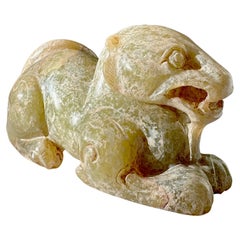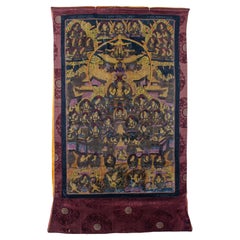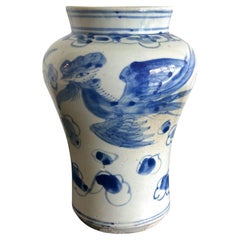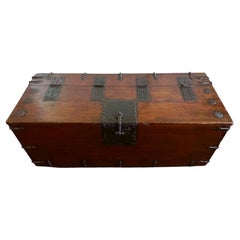Georgia - Asian Art and Furniture
15th Century and Earlier Chinese Antique Georgia - Asian Art and Furniture
Jade
20th Century Tibetan Georgia - Asian Art and Furniture
Silk
Late 19th Century Other Antique Georgia - Asian Art and Furniture
Porcelain
15th Century and Earlier Korean Archaistic Antique Georgia - Asian Art and Furniture
Ceramic
19th Century Korean Other Antique Georgia - Asian Art and Furniture
Iron
Early 19th Century Korean Other Antique Georgia - Asian Art and Furniture
Iron
19th Century Korean Other Antique Georgia - Asian Art and Furniture
Ceramic
15th Century and Earlier Korean Other Antique Georgia - Asian Art and Furniture
Ceramic
1940s Japanese Japonisme Vintage Georgia - Asian Art and Furniture
Paper
19th Century Japanese Meiji Antique Georgia - Asian Art and Furniture
Wood, Lacquer
Early 20th Century Korean Other Georgia - Asian Art and Furniture
Wood
19th Century Chinese Qing Antique Georgia - Asian Art and Furniture
Ceramic
17th Century Japanese Japonisme Antique Georgia - Asian Art and Furniture
Brass
1810s Japanese Japonisme Antique Georgia - Asian Art and Furniture
Brass
Mid-20th Century Japanese Japonisme Georgia - Asian Art and Furniture
Silk
19th Century Tibetan Tibetan Antique Georgia - Asian Art and Furniture
Textile, Acrylic
1950s Japanese Japonisme Vintage Georgia - Asian Art and Furniture
Wood, Paper
20th Century Japanese Japonisme Georgia - Asian Art and Furniture
Cotton, Silk
Early 20th Century Japanese Meiji Georgia - Asian Art and Furniture
Copper
1880s Japanese Meiji Antique Georgia - Asian Art and Furniture
Ceramic
1930s Chinese Chinese Export Vintage Georgia - Asian Art and Furniture
Soapstone
Early 19th Century Japanese Japonisme Antique Georgia - Asian Art and Furniture
Stone, Metal
Early 19th Century English Chinese Export Antique Georgia - Asian Art and Furniture
Porcelain
15th Century and Earlier Korean Archaistic Antique Georgia - Asian Art and Furniture
Ceramic
Late 19th Century Korean Other Antique Georgia - Asian Art and Furniture
Metal
1940s Japanese Japonisme Vintage Georgia - Asian Art and Furniture
Paper
1950s Japanese Chinoiserie Vintage Georgia - Asian Art and Furniture
Metal
Late 19th Century Korean Other Antique Georgia - Asian Art and Furniture
Porcelain
Late 19th Century Korean Other Antique Georgia - Asian Art and Furniture
Wood
20th Century Indonesian Tribal Georgia - Asian Art and Furniture
Cotton
Early 20th Century Japanese Japonisme Georgia - Asian Art and Furniture
Porcelain
Early 20th Century South Korean Other Georgia - Asian Art and Furniture
Brass
17th Century Korean Other Antique Georgia - Asian Art and Furniture
Ceramic
19th Century Korean Other Antique Georgia - Asian Art and Furniture
Iron
Late 19th Century Japanese Meiji Antique Georgia - Asian Art and Furniture
Ceramic
15th Century and Earlier Persian Islamic Antique Georgia - Asian Art and Furniture
Ceramic
16th Century Korean Archaistic Antique Georgia - Asian Art and Furniture
Ceramic
Early 19th Century Chinese Chinese Export Antique Georgia - Asian Art and Furniture
Giltwood, Lacquer
Early 20th Century Korean Other Georgia - Asian Art and Furniture
Brass
16th Century Japanese Japonisme Antique Georgia - Asian Art and Furniture
Wood, Lacquer
1890s Japanese Meiji Antique Georgia - Asian Art and Furniture
Ceramic
19th Century Chinese Export Antique Georgia - Asian Art and Furniture
Stone
Late 19th Century Burmese Other Antique Georgia - Asian Art and Furniture
Lacquer, Paper
Early 1800s Chinese Chinese Export Antique Georgia - Asian Art and Furniture
Porcelain
Early 2000s German Post-Modern Georgia - Asian Art and Furniture
Paper
Early 20th Century Japanese Japonisme Georgia - Asian Art and Furniture
Enamel, Metal
Late 18th Century Chinese Chinese Export Antique Georgia - Asian Art and Furniture
Porcelain
18th Century Japanese Edo Antique Georgia - Asian Art and Furniture
Wood, Lacquer
Early 1900s Korean Other Antique Georgia - Asian Art and Furniture
Brass
Early 20th Century Chinese Chinese Export Georgia - Asian Art and Furniture
Limestone
18th Century Chinese Chinese Export Antique Georgia - Asian Art and Furniture
Porcelain
15th Century and Earlier Korean Archaistic Antique Georgia - Asian Art and Furniture
Ceramic
Late 18th Century Japanese Edo Antique Georgia - Asian Art and Furniture
Wood, Lacquer
Early 20th Century Chinese Chinese Export Georgia - Asian Art and Furniture
Stone
17th Century Korean Other Antique Georgia - Asian Art and Furniture
Ceramic
Early 20th Century Japanese Georgia - Asian Art and Furniture
Wood
19th Century Japanese Japonisme Antique Georgia - Asian Art and Furniture
Wood, Lacquer
18th Century Japanese Edo Antique Georgia - Asian Art and Furniture
Ceramic
Mid-20th Century Persian Georgia - Asian Art and Furniture
Ceramic
18th Century Japanese Meiji Antique Georgia - Asian Art and Furniture
Ceramic
Read More
Symbols of Happiness and Rebirth Adorn This Japanese Satsuma Bowl
Decorated with white cranes and the sought-after thousand-butterflies motif, the Meiji-period vessel offers both a celebration of traditional aesthetics and a clear reflection of the era’s appetite for exquisite export pieces.
Chicago’s Pagoda Red Has a Spirited Mix of Asian Antiques and Bold New Art
For 25 years, gallerist Betsy Nathan has leveraged her keen eye and key connections to bring a unique selection of rare finds to the market.
In L.A., Gallerist JF Chen Has Long Championed Eclectic Blue-Chip Design
Now working alongside his daughter Bianca, dealer Joel Chen has presented a most covetable array of antiques, art and contemporary creations for more than 40 years.
12 Calming Spaces Inspired by Japanese Design
From cherry-blossom-adorned walls paired with glamorous lighting to wood-paneled ceilings above checkerboard-patterned chairs, these 12 spaces seamlessly blend Eastern and Western aesthetics.
Rodrigo Rivero Lake’s Mexico City Showroom Is a Museum-Worthy Trove of Spanish Colonial and Asian Antiques
The dealer and curator has spent the past 50 years amassing a collection of exceptional art, furniture and architectural elements that trace the cultural influence of the Spanish empire from Europe to the Americas and beyond.
16 Refined Asian-Inspired Interiors
These spaces exemplify how Eastern elements elevate a home's decor.





